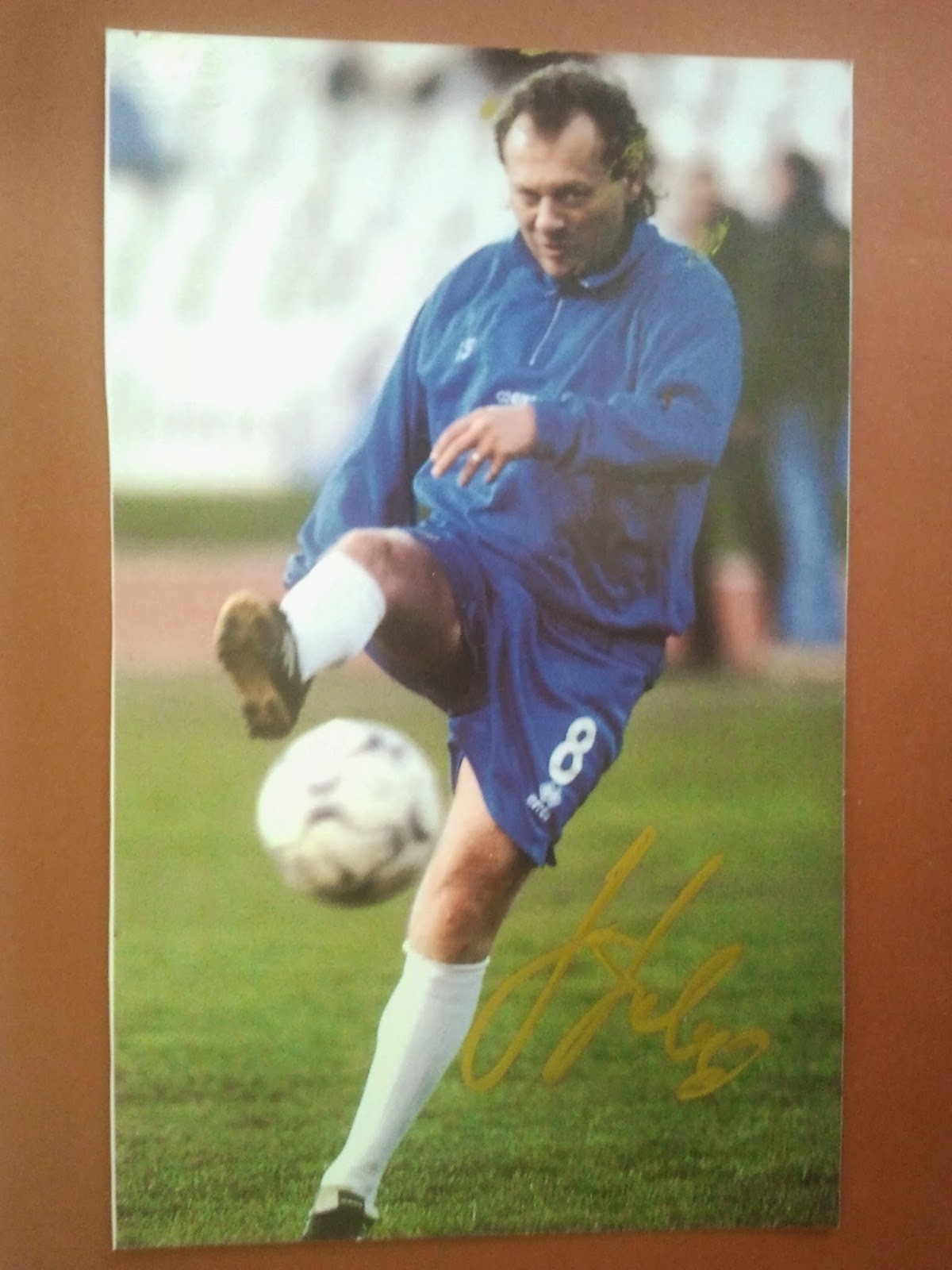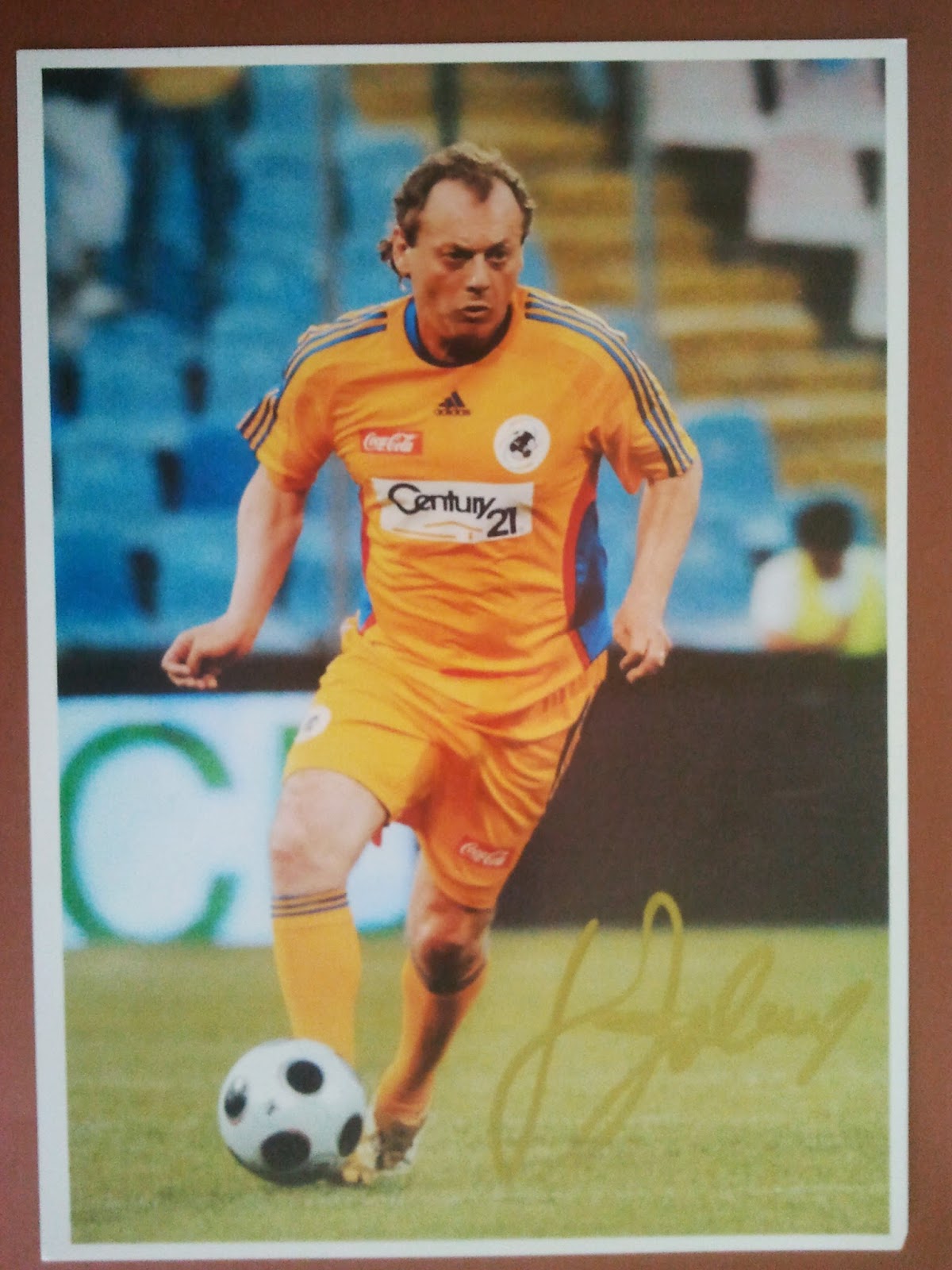 Ilie Balaci (n. 13 septembrie 1956, Bistreț, județul Dolj), este un fost jucător de fotbal din România și actual antrenor. Supranumit și „Minunea blondă”, Balaci este unul dintre cei mai mari jucători români de fotbal. Cariera sa de fotbalist se leagă de marile succese obținute de Universitatea Craiova la începutul anilor 1980.
Ilie Balaci (n. 13 septembrie 1956, Bistreț, județul Dolj), este un fost jucător de fotbal din România și actual antrenor. Supranumit și „Minunea blondă”, Balaci este unul dintre cei mai mari jucători români de fotbal. Cariera sa de fotbalist se leagă de marile succese obținute de Universitatea Craiova la începutul anilor 1980.
Din păcate, a avut un final prematur de carieră, din cauza deselor accidentări.
Cea mai gravă dintre ele, care practic a pus punct carierei de fotbalist a lui Balaci, a fost provocată de fundașul băimărean Vasile Arezanov, într-un meci de campionat, jucat la Baia Mare, la 21 februarie 1984.
Ca antrenor, deși nu a avut aceleași succese ca și jucător, a avut totuși performanțe notabile cu echipe din Africa de nord și zona țărilor arabe.

Performanțe
Ca jucător

Performanțe
Ca jucător
- Campion național: 3 titluri, în 1974, 1980 și 1981
- Cupa României: 4 victorii, în 1977, 1978, 1981 și 1983
- Fotbalistul nr.1 în România: 2 titluri, în 1981 și 1982
- 347 prezențe în Divizia A, 84 de goluri
- Debut în Divizia A: 12 august 1973: Jiul Petroșani - Universitatea 1-1
- 69 prezențe în echipa națională, 8 goluri
- 38 prezențe în cupele europene, 7 goluri
- Debut în echipa națională: 23 martie 1974, Franța - România 1-0 (este cel mai tânăr debutant în echipa națională; avea numai 17 ani și 6 luni!)
Ca antrenor
- Cupa Campionilor Africii, în 1992, cu Club Africain Tunis (Tunisia)
- Cupa Cupelor țărilor arabe, în 1993 și 1994, cu Olimpique Casablanca (Maroc)
- Cupa Campionilor Golfului, în 1997, cu Al Nassr Riad, și 1998, cu Al Hilal (ambele din Arabia Saudită)
- Cupa Cupelor țărilor arabe, în 2000, cu Al Ain (Emiratele Arabe Unite)
- Supercupa Asiei, în 2000, cu Al Ain
- Cupa Cupelor țărilor arabe, în 2000, cu Al Sadd (Qatar)
Ilie Balaci ( born 13 September 1956 in Bistreţ, Dolj County) is a retired Romanian football midfielder.
He is considered one of the greatest Romanian footballers of all time, along with Gheorghe Hagi, Nicolae Dobrin, Gica Popescu and Florea Dumitrache.
Balaci is a product of Universitatea Craiova's youth system. He made his first team debut in 1973, at the age of 16, and won the league titlein his first season. He soon managed to become one of the youngest players ever to score in the Romanian League. Balaci went on to play twelve seasons with Craiova, helping them to win two consecutive league titles in 1980 and 1981. He also won the Romanian Cup four times, in the years 1977, 1978, 1981 and 1983. He became an integral part of the team helping them reach the 1982–83 UEFA Cup semi-finals, before moving to Olt Scorniceşti in the winter of 1984. In December 1982, he signed a pre-contract with Italian side AC Milan, but the transfer did not materialize because of the communist regime in Romania.
 In the 1986–87 season, he jointed Bucharest rivals Dinamo Bucureşti together with Craiova teammate Rodion Cămătaru. He spent two seasons at the club, under the leadership of Mircea Lucescu. However, Balaci did not win any major trophies whilst he was playing for them.
In the 1986–87 season, he jointed Bucharest rivals Dinamo Bucureşti together with Craiova teammate Rodion Cămătaru. He spent two seasons at the club, under the leadership of Mircea Lucescu. However, Balaci did not win any major trophies whilst he was playing for them.
Balaci made his full international debut on 23 March 1974 in a friendly match against France at the age of 17. He earned 65 caps and scored 8 goals for the Romanian national team between 1974 and 1986.
He also became captain of the national team during the UEFA Euro 1984 qualifying campaign, but he was unable to play for Romania atUEFA Euro 84 due to an injury.
After retiring as a footballer, Balaci went on to coach lower league sides Pandurii Târgu Jiu and Drobeta-Turnu Severin. In 1991, he coached clubs in North Africa and the Arab world, he become one of the most successful managers there having won over 22 major trophies domestic and international.[
 He took charge of Tunisia’s Club Africain and Moroccan club Olympique Casablanca in the early 1990s. He then managed UAE, Qatari and Saudi Arabian clubs Al Shabab, Al Nassr, Al-Hilal, Al Ain and Al Sadd. In June 2003, he was appointed manager of Al Ahli until January 2005. He then went on to join Qatari side Al-Arabi in the 2005–06 season, before moving to the United Arab Emirates club Al Shabab for a second spell. In August 2007, Balaci was hired as general manager of Universitatea Craiova whom he also coached in two periods, and remained there for two seasons. On 22 July 2009, Balaci was named head coach of Kuwait club Kazma. He had an impressive start with the Kuwaiti side at the 2010 AFC Cup.
He took charge of Tunisia’s Club Africain and Moroccan club Olympique Casablanca in the early 1990s. He then managed UAE, Qatari and Saudi Arabian clubs Al Shabab, Al Nassr, Al-Hilal, Al Ain and Al Sadd. In June 2003, he was appointed manager of Al Ahli until January 2005. He then went on to join Qatari side Al-Arabi in the 2005–06 season, before moving to the United Arab Emirates club Al Shabab for a second spell. In August 2007, Balaci was hired as general manager of Universitatea Craiova whom he also coached in two periods, and remained there for two seasons. On 22 July 2009, Balaci was named head coach of Kuwait club Kazma. He had an impressive start with the Kuwaiti side at the 2010 AFC Cup.
On 11 July 2011, he returned to Morocco signing for Raja Casablanca but was sacked in September after just two months. Raja appointedBertrand Marchand as his replacement.
On 4 June 2013, Balaci signed a contract with newly promoted Saudi Premier League side Al-Nahda.In September 2013, he resigned his contract with the club.









